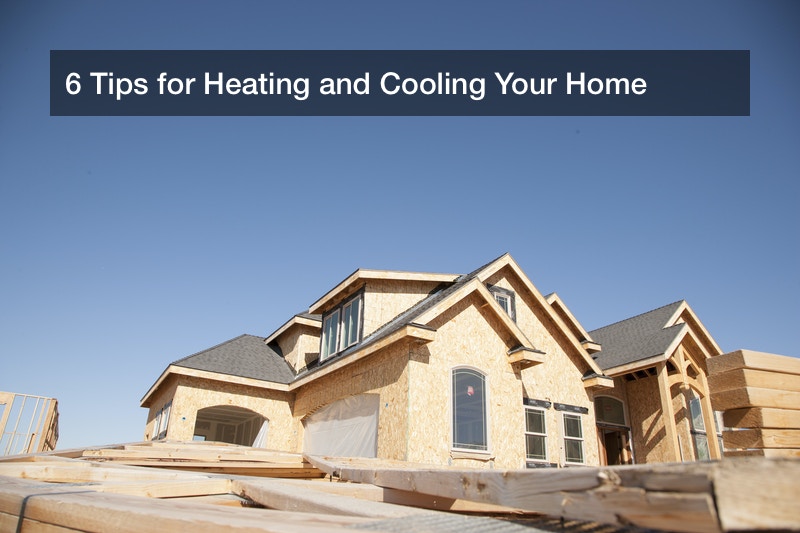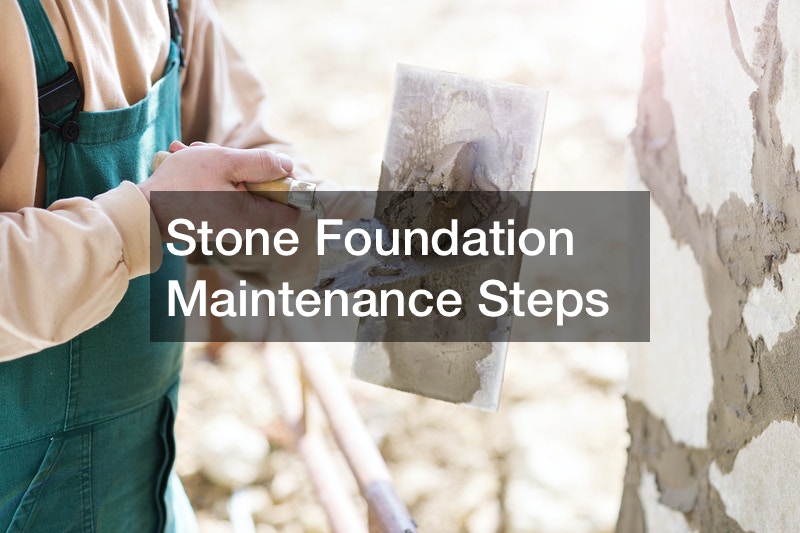
When it comes to expenses, heating and cooling can be one of the biggest ones homeowners regularly face. Heating and cooling your home uses energy all year round, especially if you live in a place with extreme fluctuations in weather.
However, there are several things you can do to maximize efficiency while still keeping your home at a comfortable temperature. A lot of these items will fall under the umbrella of general best practices for maintenance and repair. Systems that get old and damaged simply aren’t going to be as efficient so you should keep up to date on that maintenance.
However, there are some more creative options for heating and cooling your home as well. If you are already planning renovations, for example, you could take some steps toward improving temperature control during that. This is especially useful since 85% of homes in the U.S. need improvements due to being built prior to 1980. Why not take that opportunity to get yourself some long-term cost savings?
If you are thinking about how best to heat and cool your home, check out these 6 heating and cooling tips.

1. Check Out Your HVAC
For many people, air conditioning and heat is tied to HVAC systems. These systems are ubiquitous and absolutely vital.
The demand for HVACs in the U.S. is expected to go on rising for the next several years. In 2018 alone, more than 14 million HVAC units were sold here.
Part of the reason for the popularity of these systems is that they are efficient. This efficiency in heating and cooling your home is vital, as this is an investment you will be with for a long time. Homeowners are therefore turning to HVACs as a way to be efficient while still being comfortable.
These kinds of long-term decisions have ramifications for the life of your home. You want to be comfortable not just now, but well into the future. Plus, you want to get heating and cooling that won’t make your electricity bill skyrocket. HVAC systems can be useful for all of this.
That doesn’t mean they don’t come without hurdles and hassles. HVACs need maintenance. They also need to be cleaned. The National Air Duct Cleaners Association recommends getting your ducts cleaned every three to five years to maintain good performance and efficiency in the system.
However, the exact timing of cleaning HVAC systems and ducts can depend heavily on where you are located. Some warning signs to look out for is dirt in the ducts that you can easily see, any kind of mold smell, debris around the filter, and build up around the vent. These could mean that the vents themselves are getting clogged and backed up as well and are in need of cleaning.
Cleaning your HVAC and ducts isn’t just good for keeping the machine running. It can also contribute to how efficient the system is and therefore how much money you spend heating and cooling your home.
If you think you might need to do some cleaning, reach out to HVAC contractors in your area to inquire about costs and timing. It is sometimes possible to do these sorts of tasks yourself. However, because the HVAC system is connected to your electrical system, it can be a dangerous task if you don’t feel confident about it. Always err on the safe side.

2. Tighten Up Your Insulation
Insulation is vital when we are talking about heating and cooling your home. Insulation can provide a barrier that keeps heat in. At the same time, that protective barrier can keep heat out on hot days. Basically, insulation helps keep the temperature inside your home stable.
This is not only important for your comfort, but also for your bills. If your heating and cooling system have to kick in constantly, it may be because you have a problem with insulation. If hot or cold air is constantly escaping then the temperature in your home will shift, forcing the system to kick back in. This can be tremendously wasteful over time.
Some of the most common types of home insulation include mineral wool, fiberglass, cellulose, polystyrene, and polyurethane foam. Each comes with different costs and benefits.
For example, fiberglass is cheap, but dangerous and must be handled very carefully. Mineral wool is effective at insulating but is also flammable. Cellulose, on the other hand, is both effective and fire-resistant, but is just more difficult to handle.
You may find you already have one type of insulation throughout your home and just want to stick with that for heating and cooling your home. However, even if that is the case, you may want to get professional insulation installation to avoid, for example, the potential harm of something like fiberglass.

3. Consider the Roof
While you are researching heating and cooling your home, don’t forget about your roof. It is easy to overlook the roof when thinking about heating and cooling. We tend to think just about the areas of the home where we spend most of our time.
However, the roof can play a vital role in the temperature and comfort of your home, as well as how much you spend on heating and cooling your home.
Roofs regularly require maintenance and replacement. If your roof is nearing that point, you might want to consider whether you can get a more energy-efficient roof. This could reduce your heating and cooling bills dramatically by keeping out hot air in summer and keeping in warm air in winter.
When it comes to picking the right roof for your situation, it all comes down to location, location, location. Even the ideal color for your roof might change depending on where you live. For example, if you live somewhere warm, you would want a light-colored roof that can reflect sunlight. If you live someone cold, you would want a darker-colored roof to absorb all that heat.
No matter where you live, however, you will want to note whether the roof you are choosing has an Energy Star label. This label can give you peace of mind that your roof is energy-efficient. Energy Star-rated roofs reflect enough sunlight to qualify as energy-efficient.
There are many options for roofing these days. You could go with metal, wood, classic tile or even concrete. Nowadays, some people are even planting their roofs to create green roofs that are actually full-on gardens on top of your home. These are great for conserving energy, preventing stormwater runoff, and keeping your home cool.
No matter which direction you go, you may want to reach out to local roofers to help you with replacing your roof. There are some parts of this job you can do on your own, but you will probably need the help of experts eventually.

4. Investigate Home Heating Oil
HVAC systems are very popular in the U.S. However, the second choice for heating and cooling your home is home heating oils.
This system relies on oil, of course, and isn’t quite as environmentally friendly as some other options due to that. Some cities and states are even pushing to move away from oil for heating and cooling homes because of this. The oil is used in furnaces or boilers in homes and other buildings.
However, there are advantages to home heating oil for heating and cooling your home. There is a good supply of heating oil on the market today, so you don’t need to worry about supply. Oil also tends to be cheaper, on average, than electric-based heating and cooling, though this can fluctuate depending on the current cost of crude oil.
Oil also burns cleaner today than it did in the past. Home heating oil systems have become more efficient and less polluting over time, though they’re still may be innovations that could be made.
In fact, most homes are using heating oil these days, at least to some extent. It is not always an all or nothing game. There can be a mixture of approaches that turns out to be the most effective approach to heating and cooling your home.
When it comes to efficiency, you should check out your furnace first and foremost. That is where you will be able to tell how effectively that oil is burning. Some amount of fuel will be lost in the heating and cooling process, but you want as close to 100% as you can get. The general recommendation is that if your furnace has an efficiency rating below 80%, meaning only 80% of the oil is being burned for heating and the rest is wasted, you should replace your furnace. Investigate home heating oil more to if it’s right for you and your home.

5. Don’t Forget Air Conditioning
It’s easy to talk about heating and cooling your home and only focus on the heating part of things. However, cooling is just as vital, especially if you live somewhere that experiences extremely hot temperatures each summer.
There are many options when it comes to air conditioning. Many people still find window units and an effective and efficient means of cooling their homes off in the summertime. These are great for cooling down one specific room, such as a bedroom, but might not be a great choice if you are trying to cool off a large space.
There is also central air, which is more suited for cooling off the entire house. This is a much larger and more involved system than a simple window unit, however. It requires ducts to move air around the house. The system will require an air source and pumps as well. If you are thinking about this kind of system, you will probably require professional air conditioning installation.
For very dry areas of the country, evaporative coolers are a great option. These work by taking in air through moist pads that cool the air via evaporation. It’s a system that can only work in certain areas of the country, however. Still, evaporative coolers are super-efficient, since the only electricity required is that used for the fan.
Choosing the right cooling system for your home depends heavily on where you live. Your existing HVAC or other heating and cooling system might already be able to handle some of the work. Talk to a professional if you are unsure.

6. Make It Part of a Remodel
Finally, if you are already planning to invest in some remodeling services for your home, consider adding heating and cooling your home onto your to-do list. This can be an effective way to heat and cool your house for the long run and build an efficient system into the very framework of your house.
For example, if you don’t have ducts but want to use a duct-based heating and cooling system, this might be the time to install those. While you are remodeling your kitchen you can also get these ducts installed and open up some new options for heating and cooling your home.
You could also go completely ductless. Ductless mini-split air conditioners are popular in other countries and remodeling is a great time to get them installed. With this system, you can heat room individually, but that means each room has its own air handler. This can be a lot of work to install in each room so during a remodel is the perfect time to consider this option.
If you are working with a remodeling company, they might have suggestions for heating and cooling your home in the most efficient and cost-effective way possible. Some of the solutions mentioned here are expensive upfront but return those savings over time in the form of efficiency. Others are more affordable now and might be a better long-term prospect as long as you can keep them running smoothly.
Ultimately, heating and cooling your home effectively and efficiency come down to several personal factors. Where do you live? What is the weather like there? How new or old is your home? Are you considering a remodel?
Only after factoring in all of these elements can you make the choice that is going to be the best for you, your family, and your home. Take your time and think about the bigger picture so you can make the decision that will work for the long haul.



